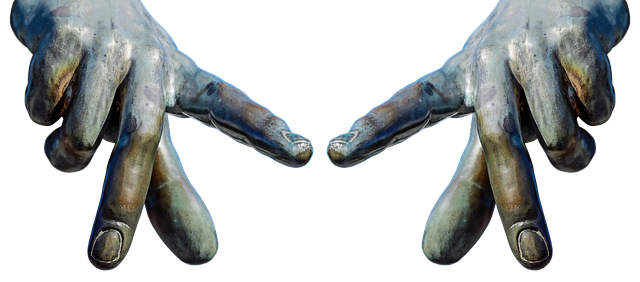How Signing Artwork Adds Value and Authenticity
The Art of Signing Your Masterpiece: A Guide to Adding Your Mark
One of the most common questions artists ask is how and where to sign their paintings. While there isn't a definitive answer to this question, signing your artwork is an essential step.
Adding your signature is like putting your stamp of approval on the piece, declaring that it is complete and that you take pride in associating your name with it. The significance of signing your work becomes evident when you consider the number of times art buyers reject unsigned pieces.
This should serve as a wake-up call for artists contemplating omitting their signatures. Be proud of your accomplishments, and let everyone know that the artwork is yours by signing it.
Signing your artwork serves multiple purposes, one of which is to claim ownership. It establishes that you, and no one else, are the piece's creator. In a previous post on Hong Kong Horrors, I mentioned that some students selling mass-produced artworks often sign the artworks in front of buyers, falsely claiming to be the artist. Imagine the frustration of seeing someone else take credit for your hard work. Signing your artwork helps protect against such misrepresentation and ensures you receive the recognition you deserve.
Is It a Legal Thing?
While it is not a legal requirement to sign your art, consider the importance of attribution. If your painting lacks a signature, how will anyone know who the artist is? While some artists may have a distinctive style that becomes recognisable over time, even unsigned works by renowned artists like Picasso are less valuable than their signed counterparts. Furthermore, think about the first time someone encounters your work.
How will they determine who the artist is if the artwork still needs to be signed? While a gallery may provide a label with your name, what if the painting hangs in a private office or home? If the owner cannot remember the artist's name, your signature becomes the key to resolving that mystery.
Determining where to place your signature is a matter of personal preference. However, tradition suggests positioning it toward one of the bottom corners, typically the right-hand side. While your signature should be a significant part of the painting, it should not distract from the artwork.
Avoid using glaring hot pink on a landscape (unless it complements an abstract piece) or covering a substantial area that shifts the focus away from the painting.
Consider blending your signature into the background or integrating it into the picture if it harmonises with the composition, such as incorporating it into the label on a handbag. While making your signature visible for those searching for it is essential, readability is crucial. An illegible signature does not add intrigue or creativity to the painting. As the artist, you should make your name known without making it look like a stamped addition.
It is not necessary to sign your full name on the front of the painting; you can opt for initials or an abbreviation of your first name. In such cases, it is advisable to include your full name on the back of the painting.

What about Name Changes
Considerations arise for female artists regarding whether to sign with their maiden name or married name. Changing your name after marriage raises the question of how to sign your paintings.
Should you continue using your maiden name or switch to your new married name? Ultimately, it depends on individual preference. It can be a dilemma, and each artist may choose a different approach.
For example, I faced this decision and decided to use only my first name on my art but signed with my married name on the reverse. Paintings from years ago still bear my old name. While they occasionally appear in auctions, it is unlikely that anyone recognises them as mine based solely on the signature, let alone the completely different style. On the other hand, suppose an artist is already known professionally by their maiden name. In that case, it may make more sense to retain it, as starting from scratch in marketing oneself can be challenging.
Should You Add A Date?
Adding a date to your painting is another aspect to consider. While it is not mandatory, it is beneficial to include the date when the artwork was created. The date does not have to be next to your signature on the front; it can be placed on the back of the painting.
When you start painting, it may be relatively easy to recall when a specific piece was created. However, as time passes and you create numerous artworks, it becomes increasingly challenging to remember the exact dates.
Serious collectors and galleries appreciate being able to track an artist's progression over the years, so dating your work becomes essential. Some argue that adding a date may limit the potential to sell the artwork, as buyers may perceive it as "last year's painting." However, it is worth noting that there is an auction market for contemporary paintings, demonstrating that buyers value artworks beyond their creation date. Recently, I came across one of my paintings in such an auction, and its "signed and dated" notation made me proud. Although I had forgotten that I painted it in 2002, it served as a timely reminder of how vital dating your art can be.
What Should You Use?
Choosing the appropriate material to sign your work is equally important. Let's begin with what not to use. Avoid felt or ink pens, especially ballpoint pens, as they can easily spoil a beautiful painting and detract from its appeal. Bold black markers may initially look acceptable, but as the ink fades over time, it often turns an unpleasant shade of green, reminiscent of an old tattoo. Sometimes, the signature may even disappear altogether, leaving your work unsigned.
Similarly, please stay away from tacky gold or silver metallic pens. They are better suited for prints or photographs and should be avoided in fine art. Instead, sign your work using the same medium you created it with. Whether you use acrylic, oil, pastel, watercolour, gouache, or any other medium, choose a colour that blends seamlessly with the artwork. It is best to add your signature when completing the painting, as it prevents it from appearing as a late addition and signing your work after applying a layer of varnish risks potential erasure years later when conservationists attempt to clean it.
Your signature is unique and acts as the identifier for your original work. Therefore, it is a crucial element that differentiates your art from forgeries. Art forgers not only need to recreate the artwork itself but also need to perfectly replicate the artist's signature. Thus, your signature holds immense value in establishing the authenticity of your artwork. Make it distinctive, memorable, and worthy of representing your artistic talent.
To Wrap It Up
Signing your artwork is an essential practice for artists. By adding your signature, you not only claim ownership and protect against misrepresentation but also provide a means for viewers to identify the artist behind the creation.
Take the time to carefully consider the placement, readability, and integration of your signature into the artwork. Remember to date your work, enabling collectors to appreciate your artistic journey over time. Please choose the appropriate medium to sign your artwork, avoiding materials that may fade or detract from its appeal. Finally, your signature symbolises your artistic identity and a testament to your creativity and talent. Embrace it as a significant element of your creative process and leave your mark on the art world.
Discover the importance of signing your artwork and learn how to add your mark proudly. Explore the reasons behind signing, where to place your signature, the significance of dating your work, and the suitable materials to use. Unleash the power of your signature and protect your artistic legacy.
Posted: Thursday 30 December 2010

